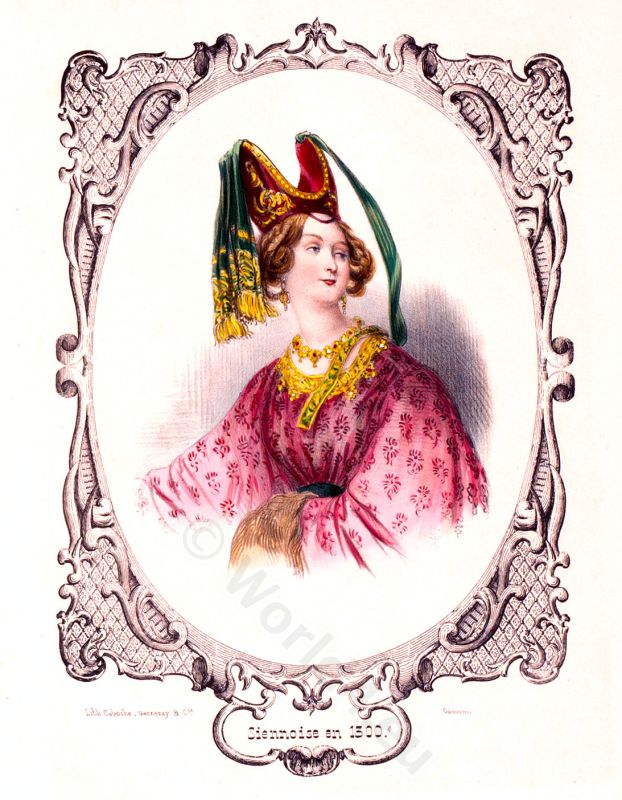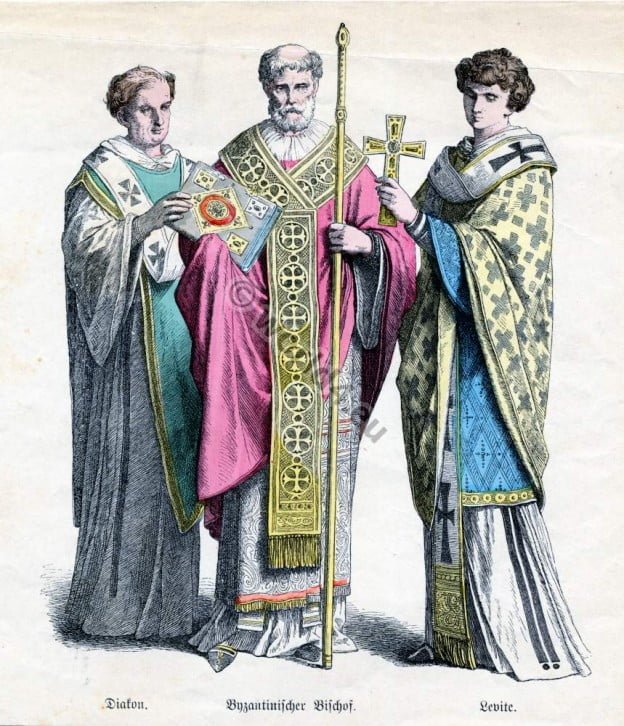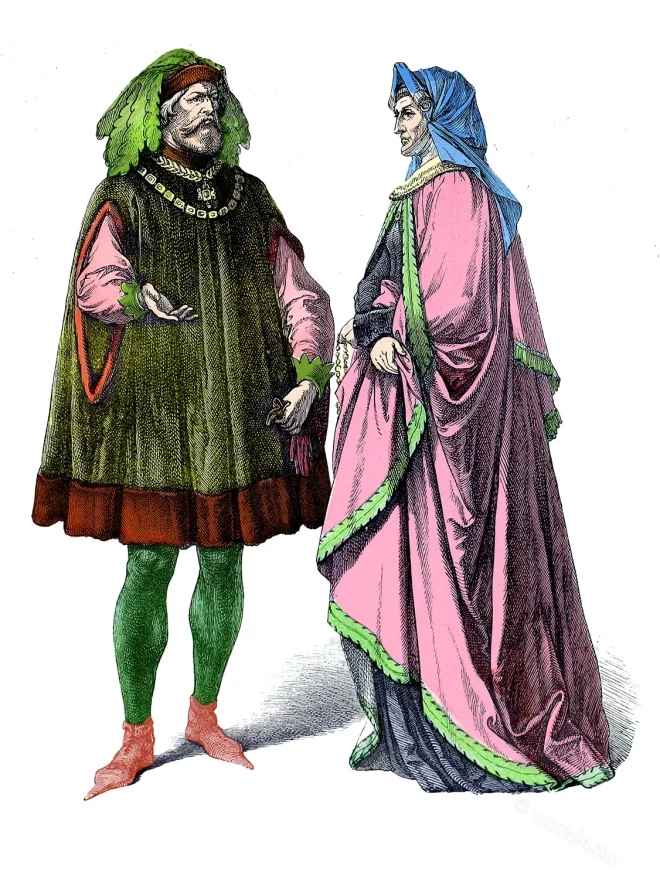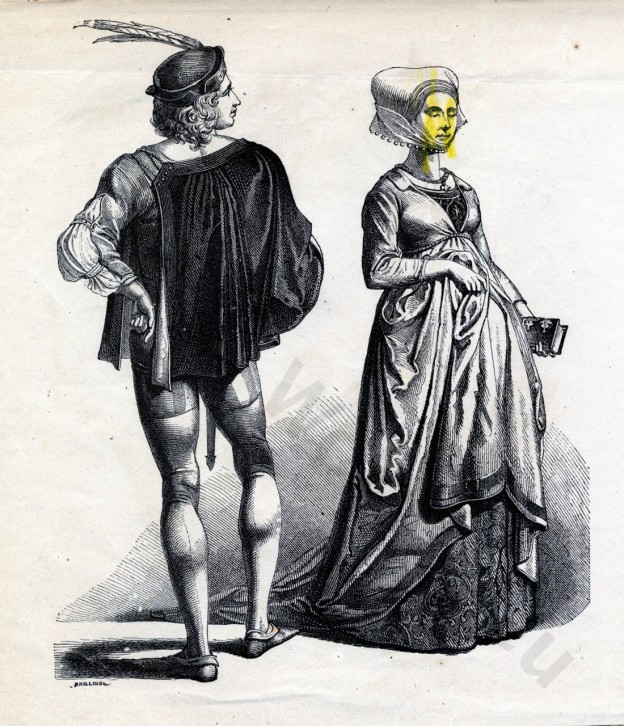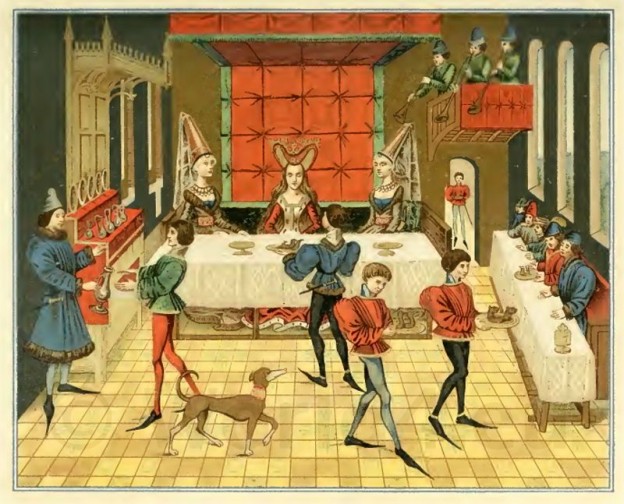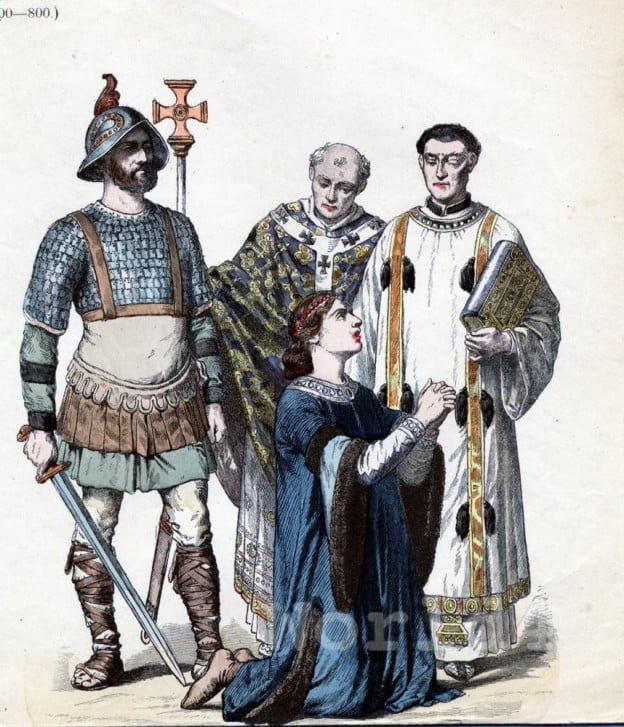Woman from Siena, wearing a horned shaped hennin. Italy 13th century.
Tag: Medieval costume
Medieval costume history. The period between the end of antiquity and the beginning of modern times about the 6th to the 15th century. It includes as superordinate, the Byzantine, Merovingian, Carolingian and Burgundian costume eras. Therein are the Gallic, Celtic, English-Saxon, Normans, Gothic, Romanesque included.
Byzantium Bishop, Deacon and Levite costumes.
[su_note note_color=”#e3fdbf”] Byzantium Bishop, Deacon and Levite costumes. [/su_note] Associated with: Byzantine costume history. The Rise of Monachism. Monastic costumes history. The Ancient Greek Costume On the history of costumes.… Read More
Byzantine nobility costumes 10th century. Court dresses.
Byzantine nobility costumes 10th century.
German patricians. Reformation. 15th c.
Clothing of German citizens during the Reformation, 1450.
German Citizens in 1480, 15th century. Middle ages fashion.
The man is dressed in the typical dandy fashion, late Gothic dress. The woman dress is close fitting with deep front and back clipping.
French fashion in 1480. Burgundian fashion in the middle ages.
The clothing in this period reflects more on the very style of the Burgundian fashion.
Medieval court etiquette. The lady of the castle.
Medieval court etiquette. The lady of the castle. 15th century. Étiquette de la cour médiévale.
Carolingian Knight in armor, Bishop, Priest and Burgess.
Carolingian clothing 751-987. Knight in armor, Bishop, Priest and Burgess.
Carolingian clothing 751-987. Queen, noblewoman and prophetess.
Carolingian clothing 751-987. Carolingian Queen, Noblewoman and Prophetess.
Charles II the Bald. West Frankish king 9th century.
Charles II the Bald (823–877 Holy Roman Emperor Charles II, King of West Francia), with Military Leader, Knight in armor, Musician.

